Speaker
Description
The European Spallation Source (ESS) in Lund, currently under construction, is designed to be the most powerful neutron source in the world. Taking advantage of the unique potential of the ESS, the NNBAR collaboration has proposed an experimental program to search for baryon number violation (BNV) due to neutron (n) – anti-neutron ( ̄n) conversions. The sensitivity increase over the previously attained limit obtained at the Institut Laue-Langevin (ILL) is expected to be of three orders of magnitude. The BNV process may occur as free neutrons propagate via ballistic motion to a detector, where the anti-neutrons will annihilate and be detected via their multi‐pion decay signature.
To reach the goal of a performance increase of three orders of magnitude, the design and optimization of the NNBAR experiment are underway. This includes the design of the neutron source, the neutron transport and the detector. For the neutron transport a system of optical components consisting of elliptical nested mirrors will be used.
The detector system, comprising calorimetry and tracking is being designed to observe the multi-pion final state arising from the annihilation, to provide the highest possible sensitivity for detecting an anti-neutron event.
In the talk I will give an overview on the present state of the work on the NNBAR experiment with special focus on the optics and detector system.
| Primary experiment | NNBAR |
|---|




